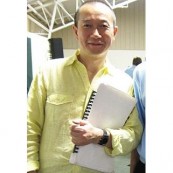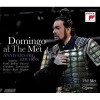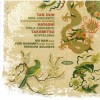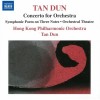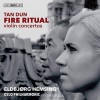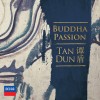| 国家: | 美国 |
| 期间: | Contemporary classical music |
传记
Tan Dun (simplified Chinese: 谭盾; traditional Chinese: 譚盾; pinyin: Tán Dùn, Mandarin pronunciation: [tʰǎn tu̯ə̂n]; born 1957, Changsha, Hunan) is a Chinese contemporary classical composer and conductor, most widely known for his scores for the movies Crouching Tiger, Hidden Dragon and Hero, as well as composing music for the medal ceremonies at the 2008 Beijing Olympics. His works often incorporate audiovisual elements; use instruments constructed from organic materials, such as paper, water, and stone; and, are often inspired by traditional Chinese theatrical and ritual performance. In 2013, he was named a UNESCO Goodwill Ambassador.
Tan Dun was born in a village in Changsha in the Hunan province of China. As a child, he was fascinated by the rituals and ceremonies of the village shaman, which were typically set to music made with natural objects such as rocks and water.[2] Due to the bans enacted during the Cultural Revolution, he was discouraged from pursuing music and was sent to work as a rice planter on the Huangjin commune. He joined an ensemble of other commune residents and learned to play traditional Chinese string instruments. Following a ferry accident that resulted in the death of several members of a Peking opera troupe, Tan Dun was called upon as a violist and arranger. This initial success earned him a seat in the orchestra, and from there he went to study at the Central Conservatory of Music in Beijing in 1977.[3] While at the Conservatory, Tan Dun came into contact with composers such as Toru Takemitsu, George Crumb, Alexander Goehr, Hans Werner Henze, Isang Yun, and Chou Wen-Chung, all of whom influenced his sense of musical style.
In 1986 he moved to New York City as a doctoral student at Columbia University, once again studying with Chou Wen-Chung, who had studied under Edgard Varèse. At Columbia, Tan Dun discovered the music of composers such as Philip Glass, John Cage, Meredith Monk, and Steve Reich, and began incorporating these influences into his compositions. He completed his dissertation, Death and Fire: Dialogue with Paul Klee, in 1993.[4] Inspired by a visit to the Museum of Modern Art, Death and Fire is a short symphony that engages with the paintings of Paul Klee.[





